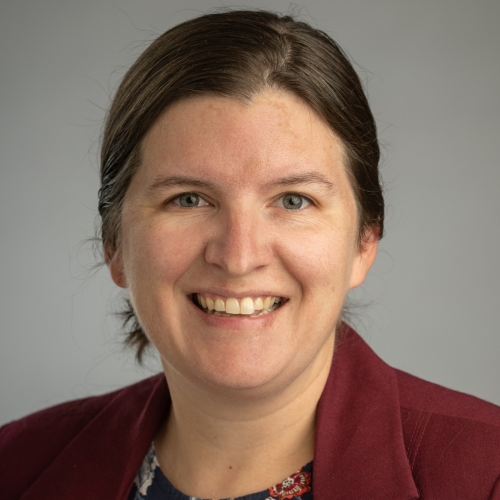
Available to mentor

I love all things RNA! In particular, I have a long-standing interest in RNP complexes, which began as an undergraduate when I had the opportunity to perform summer research in the lab of Jeffrey Smith at UVA studying rDNA transcription. Fascinated by the ribosome, I began working with Jon Dinman at the University of Maryland, College Park, investigating the role of rRNA modifications on translation fidelity. For my PhD I made the short drive north to Johns Hopkins University, where I joined the lab of David Zappulla to study the telomerase RNP complex. Next, I joined Melissa Moore’s lab at the University of Massachusetts Medical School for a postdoc studying splicing dynamics. However, my time in the lab was cut short when Dr. Moore took a job as CSO at Moderna Therapeutics. So, in 2017 I joined Dr. Wendy Gilbert’s lab where I returned to my favorite RNP, the ribosome. During this time, I developed a high-throughput method to assay translation initiation, DART, which continues to be a central technique in my current lab. Through all the bumps along the way, RNA has continued to fascinate, surprise and motivate me. Now, we devote our time to uncovering the regulatory logic within mRNA that guides protein production in both normal and disease states.
http://niederer-lab.org/ twitter
-
BSUniversity of Maryland, College Park, United States, 2009
-
PhDJohns Hopkins University, Baltimore
-
BSUniversity of Maryland, College Park, United States
-
Center MemberRogel Cancer Center
Translational control of gene expression plays an essential role during development, response to stress and a wide range of cellular processes. However, the key mRNA features that distinguish efficiently translated from poorly translated mRNAs remain largely unknown. Our lab utilizes a combination of high throughput experimental methods, biochemistry and molecular biology to both discover translational control elements and characterize novel regulatory mechanisms impacting gene expression.
-
Jones JD, Franco MK, Tardu M, Smith TJ, Snyder LR, Eyler DE, Polikanov Y, Kennedy RT, Niederer RO, Koutmou KS. 2023 Nov 12;PreprintConserved 5-methyluridine tRNA modification modulates ribosome translocation.
DOI:10.1101/2023.11.12.566704 PMID: 37986750 -
Lewis CJT, Niederer RO, Neupane R, Gilbert WV. STAR Protoc, 2022 Dec 16; 3 (4): 101862Journal ArticleOptimized protocol for quantifying 5' UTR-mediated translation initiation in S. cerevisiae using direct analysis of ribosome targeting.
DOI:10.1016/j.xpro.2022.101862 PMID: 36595943 -
Courvan MCS, Niederer RO, Vock IW, Kiefer L, Gilbert WV, Simon MD. Nucleic Acids Res, 2022 Oct 28; 50 (19): e110Journal ArticleInternally controlled RNA sequencing comparisons using nucleoside recoding chemistry.
DOI:10.1093/nar/gkac693 PMID: 36018791 -
Niederer RO, Rojas-Duran MF, Zinshteyn B, Gilbert WV. Cell Syst, 2022 Mar 16; 13 (3): 256 - 264.e3.Journal ArticleDirect analysis of ribosome targeting illuminates thousand-fold regulation of translation initiation.
DOI:10.1016/j.cels.2021.12.002 PMID: 35041803 -
Koubek J, Niederer RO, Stanciu A, Aitken CE, Gilbert WV. bioRxiv,PreprintCellular translational enhancer elements that recruit eukaryotic initiation factor 3
DOI:10.1101/2021.07.15.452589 -
Sun Y, Abriola L, Niederer RO, Pedersen SF, Alfajaro MM, Silva Monteiro V, Wilen CB, Ho Y-C, Gilbert WV, Surovtseva YV, Lindenbach BD, Guo JU. Proc Natl Acad Sci U S A, 2021 Jun 29; 118 (26):Journal ArticleRestriction of SARS-CoV-2 replication by targeting programmed -1 ribosomal frameshifting.
DOI:10.1073/pnas.2023051118 PMID: 34185680 -
Niederer RO, Hass EP, Zappulla DC. Adv Exp Med Biol, 2017 1008: 119 - 132.ChapterLong Noncoding RNAs in the Yeast S. cerevisiae.
DOI:10.1007/978-981-10-5203-3_4 PMID: 28815538 -
Niederer RO, Papadopoulos N, Zappulla DC. Sci Rep, 2016 Jan 20; 6: 19376Journal ArticleIdentification of novel noncoding transcripts in telomerase-negative yeast using RNA-seq.
DOI:10.1038/srep19376 PMID: 26786024